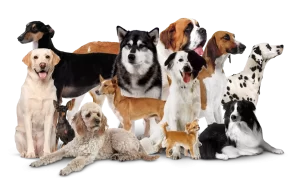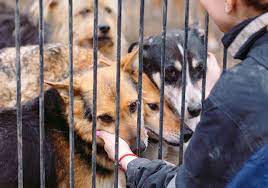Table of Contents
ToggleCan Dogs Sense Human Emotions? What Science Says About Their Intuition
Dogs are often called “man’s best friend,” but what makes this bond so unique? Have you ever noticed how your pup seems to know when you’re feeling down or excited? Let’s explore the fascinating relationship between dogs and human emotions, digging into the science behind their remarkable intuition.
Dogs and Emotional Intelligence
You might wonder: how can dogs be so in tune with our feelings? Research shows that dogs possess a keen emotional intelligence. They can read our facial expressions, body language, and even pick up on subtle changes in our tone of voice. According to a study published in the National Center for Biotechnology Information, dogs can recognize specific emotions and adjust their behavior accordingly. This ability is often referred to as “emotional contagion,” allowing them to sense when we’re happy or sad.
For more details, check out this study, which highlights how dogs respond to and utilize our emotional expressions.
How Do Dogs Perceive Our Emotions?
Dogs perceive human emotions through several senses:
- Smell: Dogs have an extraordinary sense of smell that enables them to detect changes in our body chemistry linked to emotional states. When we feel nervous or excited, our body produces different pheromones that dogs can detect.
- Sight: Dogs are adept at reading our facial expressions. They can recognize emotions like happiness, sadness, and anger, and their responses often reflect what they see. For example, a dog may approach you when they see you smiling but might keep their distance if they sense frustration or sadness.
- Hearing: Your tone of voice adds another layer to canine perception. A soothing voice can comfort a dog, while a harsh tone can make them retreat. They pick up on emotional cues just by how you say things.
A comprehensive resource on dogs’ ability to sense human emotions can be found at BetterVet.

Photo by Gabriel Frank
Examples of Dogs Responding to Emotions
You might have seen your dog reaction to your feelings. For instance:
- Comforting You: If you’re upset, your dog may come over, rest their head on your knee, or even lick your face. This behavior is often their way of offering comfort.
- Playing with You: When you’re happy, your dog may bounce around, wagging their tail and begging for play. They thrive on your positive energy!
- Avoiding You: If you’re angry or stressed, a dog might sense the tension and choose to lay low, staying away until the mood shifts.
Even in subtle ways, such as showing interest when you smile or backing off when you frown, dogs constantly “read” us.
The Science Behind the Bond
Research highlights several studies that reveal the depth of this connection. One compelling study found that dogs can discern human emotions from our facial expressions alone. They are capable of distinguishing between happy and sad faces, showing a preference for interacting with those who are smiling.
Also, it’s important to note that this sensitivity isn’t just a talent of purebred dogs. Mixed breeds, too, exhibit these abilities, indicating that emotional intelligence is a universal trait among dogs.
To learn more about the science of dogs understanding human emotions, visit FreshPet.
Improving the Human-Dog Connection
Being aware of your dog’s emotional perceptions can enhance your bond. Here are a few tips to strengthen your connection:
- Be Expressive: Dogs respond best to a variety of expressions. Use your face and tone to communicate clearly, whether you’re happy or upset.
- Reward Good Behavior: When your dog responds positively to your mood, reinforce that behavior with praise or treats.
- Spend Quality Time: Engaging in activities, like playtime or walks, helps your dog better connect with your emotional state.
If you’re curious about dog training that focuses on emotional understanding, check out our guide on Dog Training and Behavior.
Conclusion
The bond between you and your dog is one of the most empathetic connections you can experience. Dogs may not speak our language, but their ability to sense human emotions is a testament to their remarkable intuition. By recognizing their cues and responding to their emotional needs, you can create a deeper, more fulfilling relationship.
Understanding how dogs perceive our feelings enriches both their lives and ours. The next time you feel a wagging tail or a comforting nudge, remember that your dog is tuned in to your emotions and is there for you—always ready to lend a paw.









![The Ultimate Guide to Road Tripping with Your Dog [2025 Update]](https://bellabeanupdate.com/wp-content/uploads/2025/05/pexels-photo-1143369-300x209.jpeg)




















